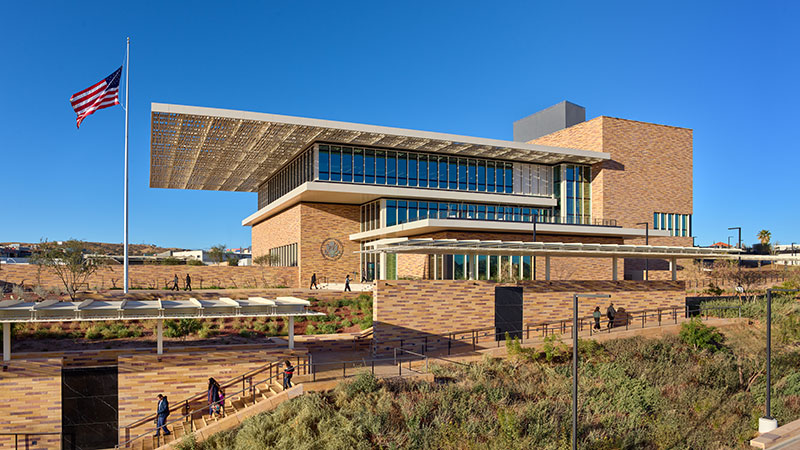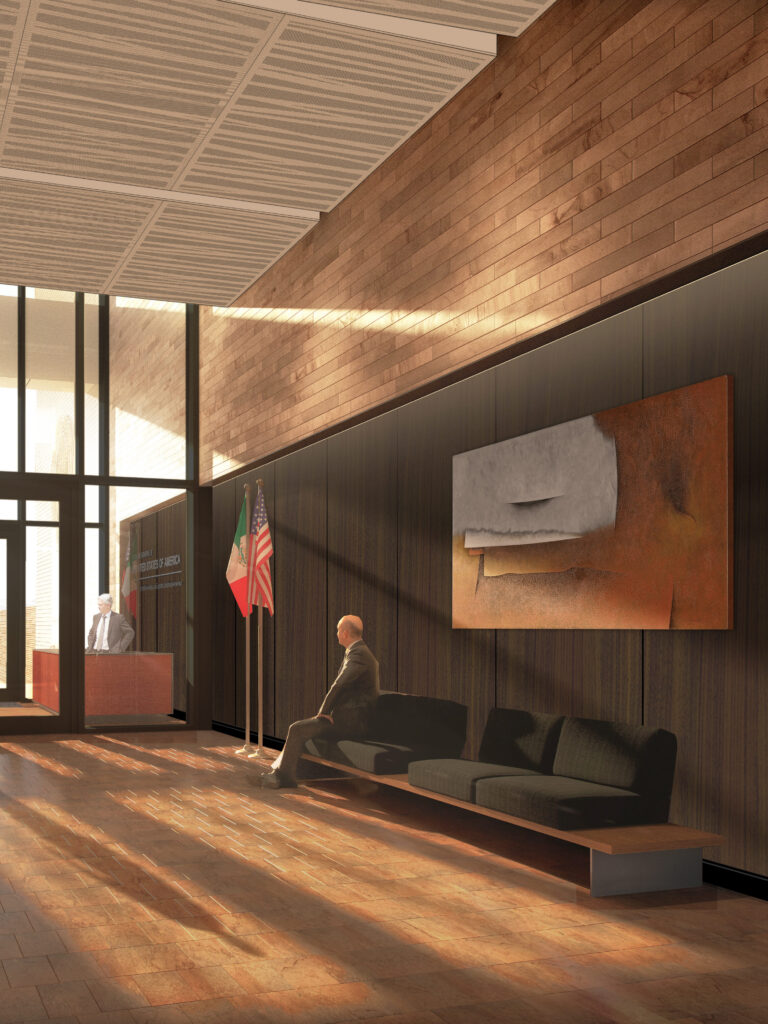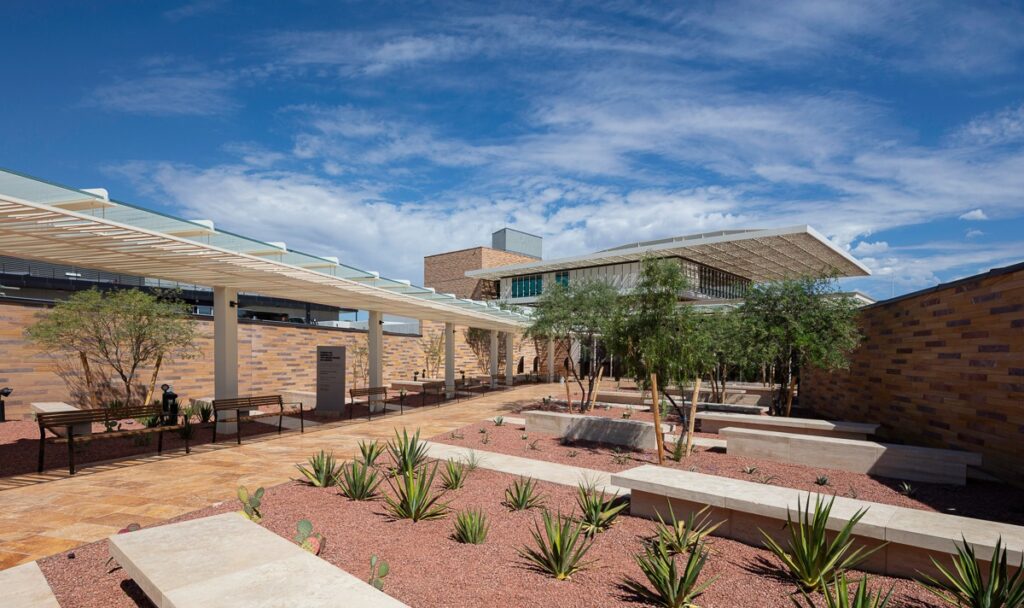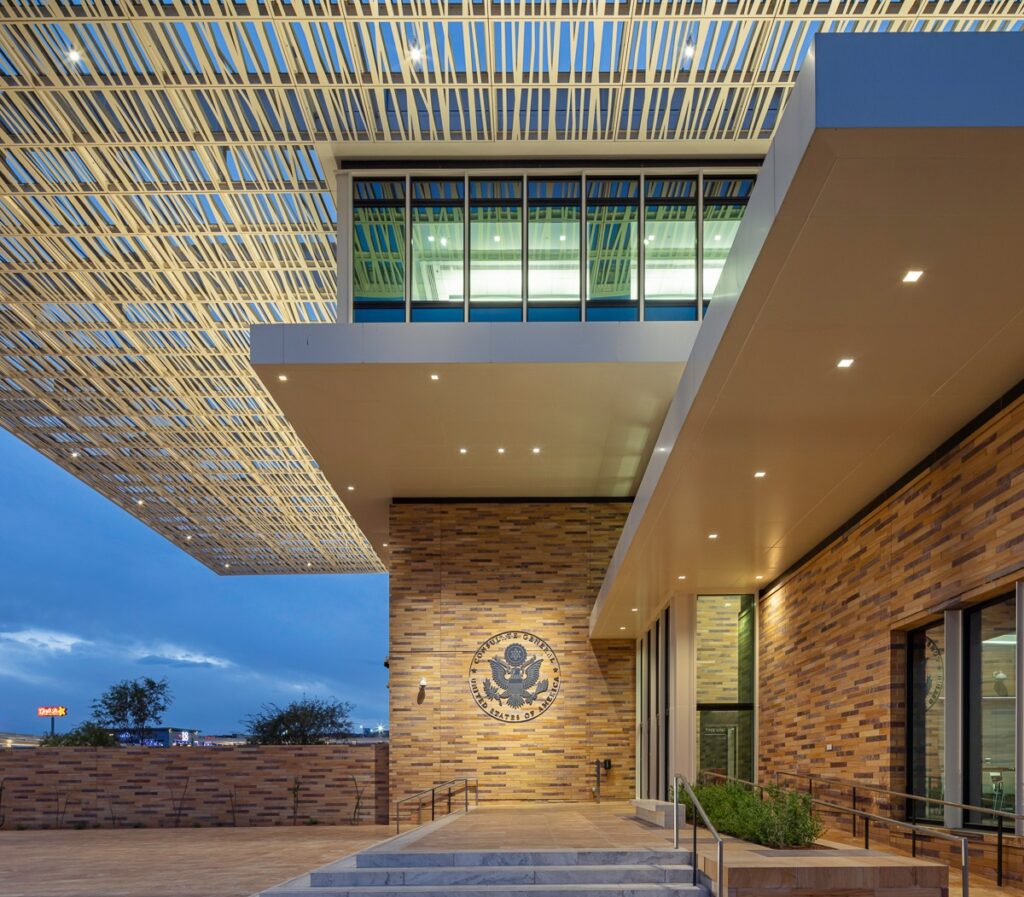
The United States and Mexico have a consequential bilateral relationship, directly impacting the everyday lives of millions of U.S. and Mexican citizens, whether through trade, joint security, or tourism. Within similar timeframes, the U.S. Department of State Bureau of Overseas Buildings Operations has undertaken five major builds across Mexico: four new consulate facilities in Hermosillo, Guadalajara, Merida, and Nogales, and a new embassy in Mexico City. Among the Mission Mexico new facilities, the new U.S. Consulate General Nogales is an important physical representation of the long-term commitment to the U.S.- Mexico relationship and a permanent presence.
Established as a U.S. consular agency in 1884 and upgraded to a consulate in 1889, Nogales has played a significant role in facilitating diplomatic relations. Its growth into a bustling factory town, fueled by maquiladora factories assembling US-made parts, has contributed to economic prosperity and employment opportunities on both sides of the border. Additionally, Nogales serves as a major border crossing for U.S. citizens traveling south into Mexico and to Pacific beaches year-round.
Project Overview
Ennead Architects
Design Architect
Page
Architect of Record
BL Harbert International
Design/Build Contractor
8.4 acres
Site Size
$203 million
Project Budget
$70 million
Estimated Local Investment
The new U.S. Consulate General Nogales catalyzes diplomacy for the U.S. and Mexico’s shared future: a strong regional partnership with robust investment, cultural, and interpersonal ties.
OBO embassies and consulates often are the first experience host country citizens and government officials have with the United States overseas. The expanded and improved consular section accommodates the large number of visitors the staff assists throughout the year. A consular entry pavilion eases access to the site, while the large waiting room and shaded garden areas provides a variety of comfortable spaces for visitors.

Design & Construction
The Nogales landscape is defined by the surrounding hills of desert pine-oak grassland. Influenced by this landscape and the shared culture of the border area, the architecture draws inspiration from the local material palette, including stone and wood, and traditional building techniques like the Ramada. The modern Ramada canopies shade and protect the building’s outdoor spaces, replacing the traditional thatched roof structure with lightweight laser-cut aluminum panels.
The site and building take advantage of outside spaces for meeting and event spaces. The gallery, with direct access to the terrace and views of the city, provides the mission community to host internal and public gatherings.
An estimated total work force of 650 U.S., Mexican and third-country nationals were engaged in the construction of the new consulate.


Building Performance
A model of building performance optimization, the resilient facility reduces risk and operating costs associated with utilities and maintenance while enhancing natural hazards adaptation.
The design includes a variety of utility optimization strategies including solar photovoltaic (PV) arrays, storm water retention and infiltration, and regionally-adapted landscaping. The adapted Ramada awnings and the efficient exterior envelope reduce solar heat gain and the demand on the cooling system in the harsh desert climate. The façade is primarily clad in stacked regional stone, which keeps solar heat gain to a minimum by acting as a heat sink. The project targets Leadership in Energy and Environmental Design (LEED) Silver certification.
Art
One of the defining features of the new U.S. Consulate Nogales is the incorporation of American and Mexican contemporary artwork throughout the building, curated by OBO’s Office of Art in Embassies (AIE). AIE creates spaces that honors the cultural legacy of the U.S. and the host country while symbolizing the harmonious relationship between our countries.
The Nogales collection serves as a dialogue between American artists, influenced by the U.S. – Mexico border culture through the colors, culture, and experiences of the Sonoran Desert and the unique geography, flora, and fauna of the region. This shared landscape, with its biological diversity and its unique environment, connects the United States and Mexico. For both countries, it is a place which in its perceived difficulties allows for vibrant life, artistic interpretation, creative inspiration and ingenuity, informing traditional arts and crafts like muralism, ceramics and basketweaving. The collection is comprised of artists Celeste (María Fernanda Camarena and Gabriel Rosas Alemán), Mariah Dekkenga, Katy Fischer, Ishi Glinsky, Mario Martinez, and Olivier Mosset.
Through the Art in Embassies collection, the consulate is a platform for cultural exchange, where the shared landscapes and stories of the American Southwest and Mexico intertwine, reflecting the enduring cultural bonds between our nations.

Press
- The U.S. Department of State Celebrates the Ribbon-Cutting of the New U.S. Consulate Hermosillo and the Dedication of the New U.S. Consulate Nogales – United States Department of State
- Groundbreaking Ceremony of the New U.S. Consulate General in Nogales – U.S. Embassy & Consulates in Mexico
- Building Diplomacy – State Magazine
